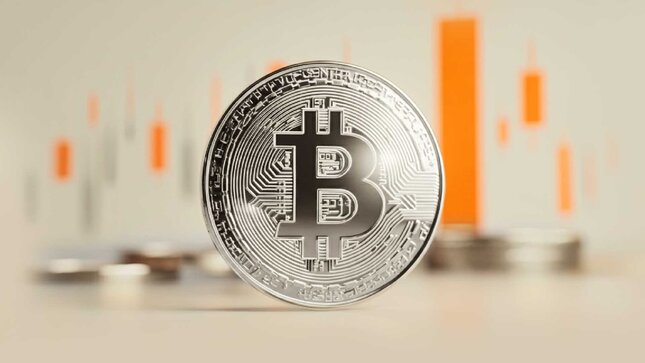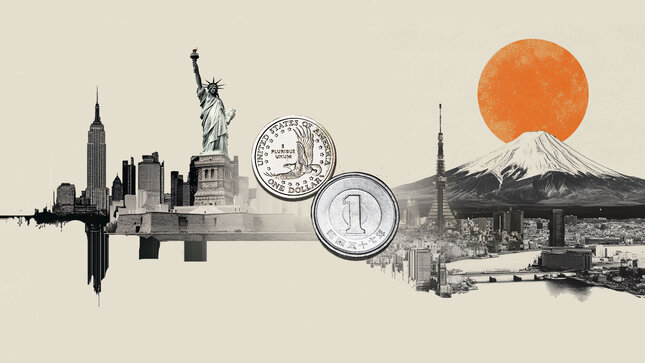Long before fiat currency, digital dollars, or cryptocurrency, America’s Founders sought to anchor the young nation’s economy in gold and silver, i.e. sound money.
In fact, on April 2, 1792 – 233 years ago – President George Washington signed legislation that established America’s monetary system.
Also known as the Mint Act and officially titled An Act Establishing a Mint and Regulating the Coins of the United States, The Coinage Act of 1792 is regarded as one of the most foundational laws in U.S. history.
Of the Founding Fathers, Thomas Jefferson, James Madison, John Adams, and George Washington each advocated that gold and silver coins should be the money of the nation.
America’s first Treasury Secretary and fellow Founding Father, Alexander Hamilton, advocated for a hard-metal standard and helped design the U.S. dollar based on the widely circulated Spanish milled dollar—also known as the “Spanish real” or “pieces of eight.”Before authoring the Coinage Act, Hamilton warned in 1790, “To emit an unfunded paper as the sign of value, certainly has some advantages of a temporary nature, but it is calculated to produce great mischiefs in the long run.”
It was this seminal sound money law that established the United States Mint in Philadelphia, created a decimal currency system, defined U.S. coins by weight and metal, and authorized a gold and silver standard. It followed the intent of the Constitution itself.
When people refer to “Constitutional money,” they are referring to gold and silver coins.
Article 1, Section 8, Clause 5, of the US Constitution, says of the federal government, “Congress shall have Power... to coin Money, regulate the Value thereof, and of foreign Coin, and fix the Standard of Weights and Measures.”
Article 1, Section 10, Clause 1, says of the states, “No State shall... make any Thing but gold and silver Coin a Tender in Payment of Debts.”
The Coinage Act of 1792 codified this Constitutional wording, establishing gold and silver coins (also known as specie) as official tender instead of paper currency or fiat currency.
The Coinage Act went further by legally fixing the gold-to-silver ratio at 15:1 (meaning 15 ounces of silver is equal to 1 ounce of gold) and then pegged the U.S. dollar (denominated in gold and silver) to this ratio. This bimetallic standard, also known as bimetallism, defined the country’s currency by two precious metals, i.e. gold and silver. It created a uniform and stable coinage system that could compete on an international scale.
For $1 silver coins, the weight was set at 371.25 grains of pure silver, or 416 grains of standard silver (≥89.24% pure silver). This equals around 0.7734 troy ounces of pure silver or 0.8667 troy ounces of standard silver. These weights and purity corresponded with the popularly circulated Spanish reales (“pieces of eight”), which had around 377.1668 grains of pure silver (24.44 grams).
For $10 gold Eagles, the standard weight was 247.5 grains of pure gold, or 270 grains for standard gold (≥91.67% pure gold). This equals around 0.5156 troy ounces of pure gold or 0.5625 troy ounces of standard gold. These measurements were based on the popular coins of the day, including the Spanish 8 escudos doubloon.
With money made from gold or silver, inflation was almost non-existent, the government was far more restricted, and people were able to afford more with less while paying off debts and planning for the future.
Since 1792, there have been at least a dozen changes to the U.S. currency and monetary system, essentially redefining the meaning of the U.S. dollar. The changes were often slow and methodical, but simultaneously detrimental and the antithesis of everything the Constitution and the Founders intended.
The country abandoned bimetallism through the Coinage Act of 1873, widely known as “The Crime of ‘73,” by demonetizing silver as a part of the monetary system. Then in 1900, the country established a gold-only standard under the Gold Standard Act.
By 1933, the U.S. would no longer embrace gold at all, at least domestically, and this would lead to a heavy devaluation of the purchasing power of USD. Per government statistics, this equates to around 96.02% loss of purchasing power since 1933.
In 1965, silver was eliminated from coins, and by 1971, the country adopted a fully fiat currency. $1 purchasing power in 1971 now requires around $8. This means USD has lost around 87.5% purchasing power since 1971.
The monetary policy shift away from gold and silver Constitutional sound money to fiat currency has created widespread adverse inflation, a tyrannically unaccountable governing body, and the cost of living and properly planning for the future has become oppressively burdensome.
The Founders and the Constitution warned against this very thing, which is why Congress established the Coinage Act of 1792.
To receive free commentary and analysis on the gold and silver markets, click here to be added to the Money Metals news service.
Money Metals Exchange and its staff do not act as personal investment advisors for any specific individual. Nor do we advocate the purchase or sale of any regulated security listed on any exchange for any specific individual. Readers and customers should be aware that, although our track record is excellent, investment markets have inherent risks and there can be no guarantee of future profits. Likewise, our past performance does not assure the same future. You are responsible for your investment decisions, and they should be made in consultation with your own advisors. By purchasing through Money Metals, you understand our company not responsible for any losses caused by your investment decisions, nor do we have any claim to any market gains you may enjoy. This Website is provided “as is,” and Money Metals disclaims all warranties (express or implied) and any and all responsibility or liability for the accuracy, legality, reliability, or availability of any content on the Website.
Editors’ Picks

EUR/USD flatlines below 1.1800 amid trading lull, awaits Fed Minutes
EUR/USD trades around a flatline below 1.1800 in European trading on Tuesday. The pair lacks any trading impetus as the US Dollar moves little amid market caution ahead of the Fed's December Meeting Minutes release, which could offer insights into the Federal Reserve’s 2026 outlook.

GBP/USD retakes 1.3500 despite the year-end grind
GBP/USD finds fresh demand and retakes 1.3500 on Tuesday as markets grind through the last trading week of the year. Despite the latest uptick, the pair is unlikely to see further progress due to the year-end holiday volumes.

Gold holds the bounce on Fed rate cut bets, safe-haven flows
Gold holds the rebound near $4,350 in the European trading hours on Tuesday. The precious metal recovers some lost ground after falling 4.5% in the previous session, which was Gold's largest single-day loss since October. Increased margin requirements on gold and silver futures by the Chicago Mercantile Exchange Group, one of the world’s largest trading floors for commodities, prompted widespread profit-taking and portfolio rebalancing.

Tron steadies as Justin Sun invests $18 million in Tron Inc.
Tron (TRX) trades above $0.2800 at press time on Monday, hovering below the 50-day Exponential Moving Average (EMA) at $0.2859.

Bitcoin Price Annual Forecast: BTC holds long-term bullish structure heading into 2026
Bitcoin (BTC) is wrapping up 2025 as one of its most eventful years, defined by unprecedented institutional participation, major regulatory developments, and extreme price volatility.
RECOMMENDED LESSONS
Making money in forex is easy if you know how the bankers trade!
I’m often mystified in my educational forex articles why so many traders struggle to make consistent money out of forex trading. The answer has more to do with what they don’t know than what they do know. After working in investment banks for 20 years many of which were as a Chief trader its second knowledge how to extract cash out of the market.
5 Forex News Events You Need To Know
In the fast moving world of currency markets where huge moves can seemingly come from nowhere, it is extremely important for new traders to learn about the various economic indicators and forex news events and releases that shape the markets. Indeed, quickly getting a handle on which data to look out for, what it means, and how to trade it can see new traders quickly become far more profitable and sets up the road to long term success.
Top 10 Chart Patterns Every Trader Should Know
Chart patterns are one of the most effective trading tools for a trader. They are pure price-action, and form on the basis of underlying buying and selling pressure. Chart patterns have a proven track-record, and traders use them to identify continuation or reversal signals, to open positions and identify price targets.
7 Ways to Avoid Forex Scams
The forex industry is recently seeing more and more scams. Here are 7 ways to avoid losing your money in such scams: Forex scams are becoming frequent. Michael Greenberg reports on luxurious expenses, including a submarine bought from the money taken from forex traders. Here’s another report of a forex fraud. So, how can we avoid falling in such forex scams?
What Are the 10 Fatal Mistakes Traders Make
Trading is exciting. Trading is hard. Trading is extremely hard. Some say that it takes more than 10,000 hours to master. Others believe that trading is the way to quick riches. They might be both wrong. What is important to know that no matter how experienced you are, mistakes will be part of the trading process.
The challenge: Timing the market and trader psychology
Successful trading often comes down to timing – entering and exiting trades at the right moments. Yet timing the market is notoriously difficult, largely because human psychology can derail even the best plans. Two powerful emotions in particular – fear and greed – tend to drive trading decisions off course.
